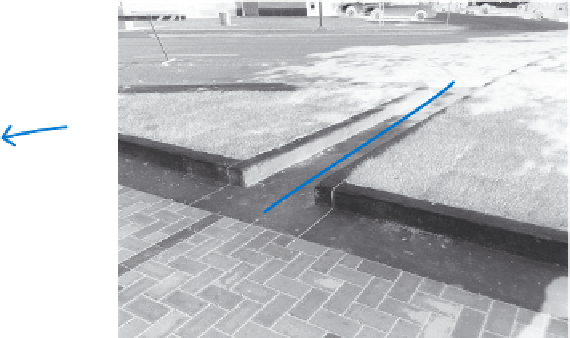Agriculture Reference
In-Depth Information
Ultimately, the surface water is collected in a catch basin or directed to a
rain garden or planting area, where the water may be absorbed into the
ground or held in a landscaped retention area.
Figures 14.20-a and 14.20-B
Concrete drainage channels to carry surface water from a parking lot to an adjacent road
roadside drainage Swale
The swale shown in Figure 14.21 was created to carry surface water from
the adjacent roadway and the surrounding sloping landscape area. Note
the culvert at the end of the swale, which
allows surface water to continue under an
entrance drive to a continuation of the
swale along the road.
Surface water is carried by gravity
in a grassy swale toward the culvert that
allows the water to flow under the access
driveway. The grass serves to slow down
the water, allowing some percolation into
the soil. The grass also protects the swale
from erosion, particularly when water run-
off is high and large quantities of moving
water could cause soil erosion. Grass or
other vegetative ground cover also serve to
Figure 14.21
This drainage swale was created along a
campus road, instead of using a curb and gutter design























